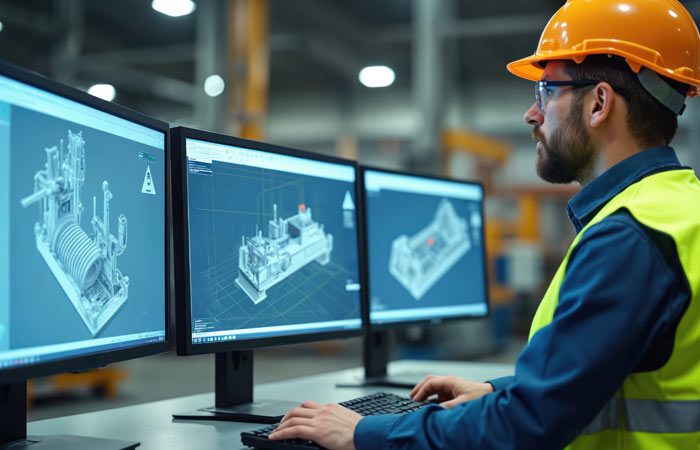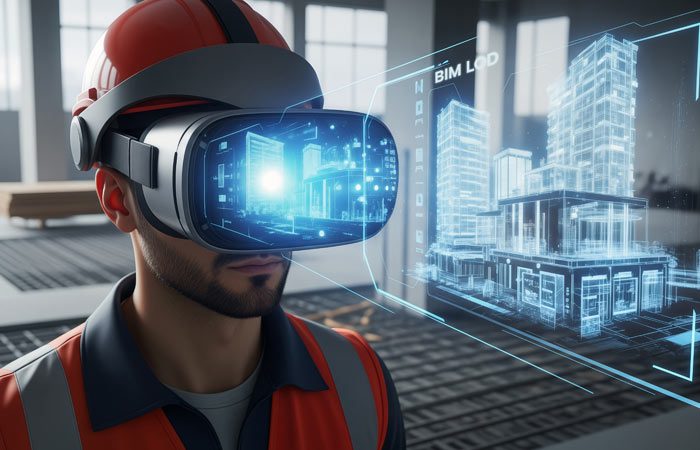
Lifecycle Value: Why BIM Is More Than Just a 3D Model
In the industrial world, Building Information Modeling (BIM) is often introduced as a visual aid — a sophisticated 3D model that helps engineers visualize space, geometry, and coordination. But those who’ve worked on real-world projects, especially in brownfield and retrofit environments, know that BIM goes far beyond visualization. It is the backbone of intelligent decision-making across a plant’s lifecycle — from as-built documentation to piping modifications and long-term maintenance.
Modern plant engineering, particularly in oil & gas, power, and chemical sectors, is evolving rapidly. And in this transformation, 3D laser scanning in piping engineering is emerging as a game-changer — delivering precision, reducing rework, and creating a digital foundation for future-ready operations.
The Evolution of BIM: From Drawings to Decisions
Earlier, piping engineering for brownfield projects was largely dependent on manual surveys and legacy drawings. Traditional methods meant long hours of field measurement, fragmented data, and frequent mismatches between what was drawn and what existed on-site. The result? Delays, redesigns, and higher costs.
Today, with 3D laser scanning for brownfield projects, engineers can capture millions of data points in minutes. These scans form precise 3D point clouds, which can then be converted into accurate models for brownfield piping design services or piping system 3D modeling. The result is a “digital twin” that represents the physical reality of the plant — accurate down to millimeters.
This transformation allows teams to visualize existing conditions, plan modifications, and coordinate new designs with unmatched clarity. For retrofit and revamp jobs, this means fewer surprises and faster turnarounds.
Why Accuracy Matters in Brownfield Engineering
In greenfield projects, design begins on a blank canvas. But brownfield environments are different — you’re working around live systems, aging infrastructure, and tight shutdown windows. One oversight can cascade into weeks of delay.
That’s where laser scanning for piping modification proves invaluable. Instead of relying on assumptions, engineers use laser scans to identify clashes, route new lines, and verify clearances before even stepping onto the site. This approach is now standard practice in piping engineering for brownfield projects, plant revamps, and retrofit piping engineering services.
Beyond just accuracy, it’s also about safety and cost. With 3D laser scanning for plant retrofits, engineers can collect data remotely, minimizing exposure in hazardous or confined spaces. That reduces both human risk and the need for repeat site visits — a big cost advantage.
Turning Point Clouds into Engineering Intelligence
A common misconception is that 3D laser scanning ends with colorful point clouds. The real value emerges when those scans are translated into actionable design intelligence.
Through advanced 3D scanning in plant engineering workflows, point clouds are aligned, filtered, and converted into intelligent piping models. These models aren’t just geometric — they carry metadata such as pipe specs, materials, insulation, and valve information. This is where 3D point cloud piping design bridges the gap between visualization and engineering intent.
Such models enable teams to simulate process changes, assess flow or stress impacts, and plan shutdowns more intelligently. Moreover, they serve as a reliable base for laser scanning for as-built documentation, helping maintain digital accuracy even years after construction.
Comparing Old and New: Laser Scanning vs Traditional Surveys
In many ways, 3D laser scanning vs traditional piping survey methods is not a fair comparison — they serve different eras. Traditional survey methods rely on manual measurements, often missing hidden or obstructed areas. Laser scanning, however, captures everything in one pass — including inaccessible regions.
With plant revamp 3D laser scanning, accuracy typically reaches ±2 mm, compared to ±25 mm or worse from manual surveys. That precision translates directly into better designs, fewer clashes, and smoother fabrication.
When measured across the full project lifecycle, cost savings with 3D scanning in plant piping projects can reach 20–40%. These savings come not just from reduced field work, but from minimized rework, shorter shutdowns, and better planning during construction.
BIM as a Lifecycle Enabler
The true value of BIM is realized after the drawings are complete. Once 3D scanning for piping modification and expansion is integrated into a BIM workflow, the resulting model serves as a single source of truth for every stakeholder — from EPCs to maintenance teams.
Owners can link this digital model with asset management systems, run predictive maintenance simulations, and even train operators virtually. For EPC brownfield projects, the role of 3D laser scanning becomes critical — it ensures design integrity, reduces site risks, and allows teams to coordinate seamlessly across geographies.
The synergy of BIM and scanning technologies is also reshaping specific sectors. In oil & gas, 3D laser scanning services in piping projects help ensure compliance with global safety standards while keeping downtime minimal. In chemical plants, piping engineering services leverage scans to plan capacity expansions without disturbing live units. And in the power sector, 3D scanning solutions for plant revamps make it possible to modernize legacy facilities without compromising structural stability.
Piping Layout Optimization: The Hidden Advantage
Beyond documentation, piping layout optimization with 3D scanning unlocks tremendous efficiency. Engineers can simulate flow, check for thermal expansion, and plan support systems virtually before fabrication begins. This helps optimize routing, minimize pressure drops, and reduce material costs.
For EPCs and plant owners, this level of precision means they can make decisions faster, validate them with data, and maintain long-term digital continuity. BIM, when coupled with 3D scanning in plant engineering, transforms from a design tool into a continuous improvement engine — one that keeps adding value long after project handover.
The TAAL Tech Perspective
TAAL Tech, a global engineering services provider, has been at the forefront of this transformation. The company combines deep process knowledge with advanced 3D laser scanning in piping engineering to deliver reliable brownfield project piping solutions for industries worldwide.
Their teams integrate scanning, modeling, and BIM to provide end-to-end retrofit piping engineering services — from capturing as-built conditions to creating intelligent 3D models ready for design, simulation, and maintenance. By aligning laser scanning with lifecycle BIM practices, TAAL Tech helps clients reduce rework, improve constructability, and achieve safer, faster project execution.
Looking Ahead: BIM as a Living Asset
In the coming decade, BIM’s role will continue to expand. As plants evolve, digital models will become living assets — constantly updated through laser scanning for as-built documentation, feeding into maintenance systems, and driving data-based decisions.
That’s the real power of BIM: not the 3D view on a monitor, but the lifecycle intelligence it unlocks. For those embracing 3D laser scanning for brownfield projects, the return on investment isn’t limited to one project — it compounds over time, with every modification, every retrofit, and every upgrade executed with precision.
Because at the end of the day, BIM isn’t about how good your model looks — it’s about how intelligently your plant performs.


